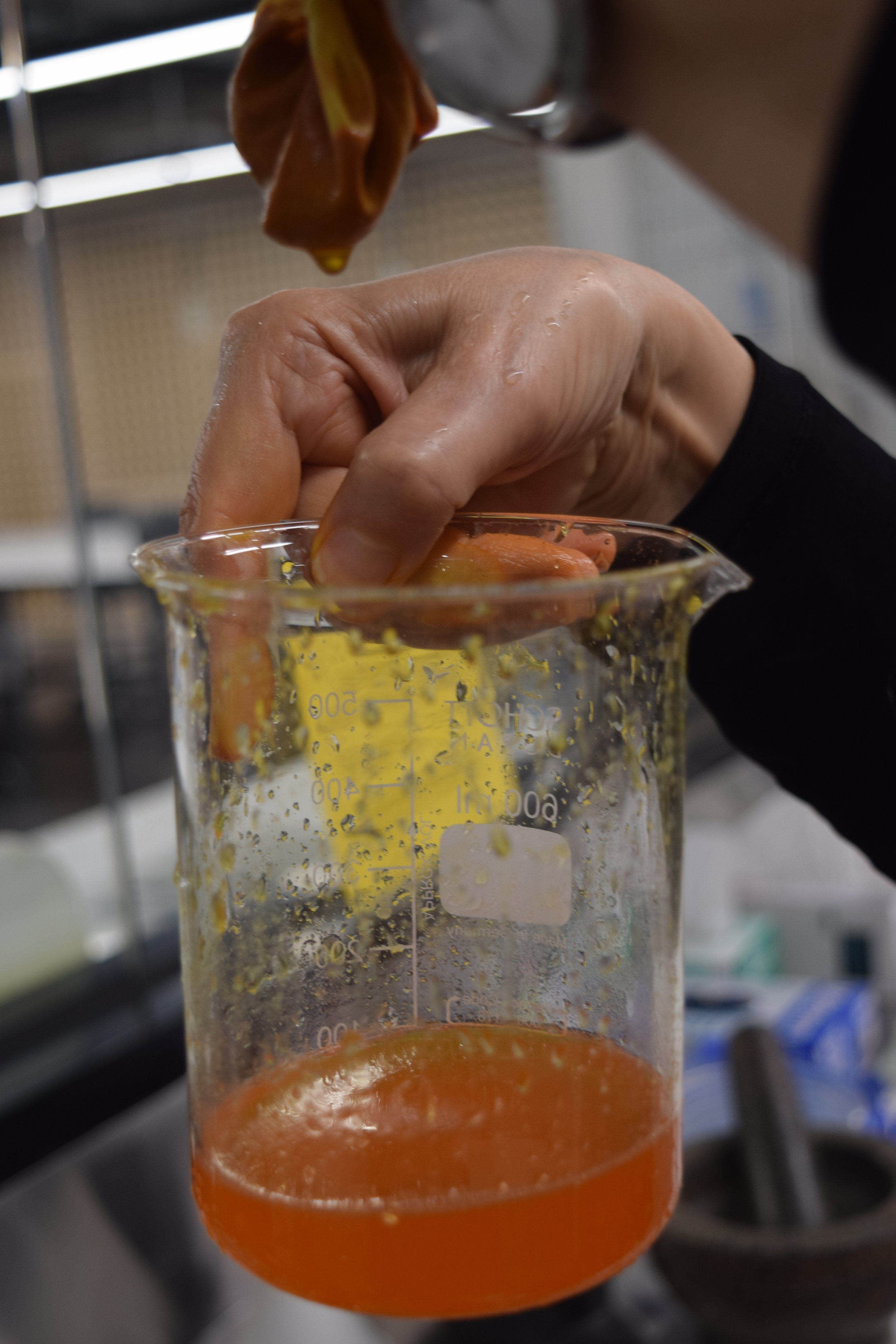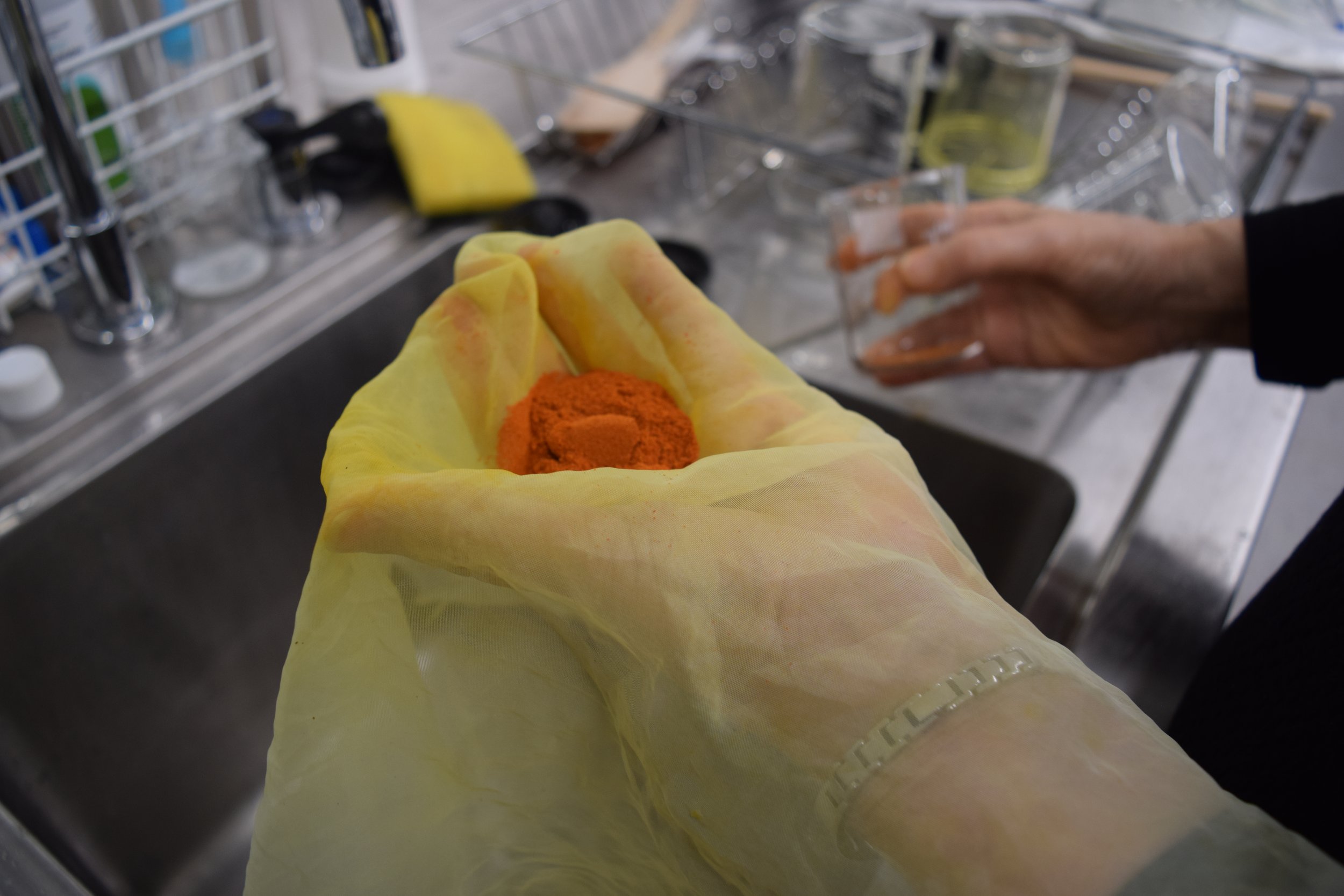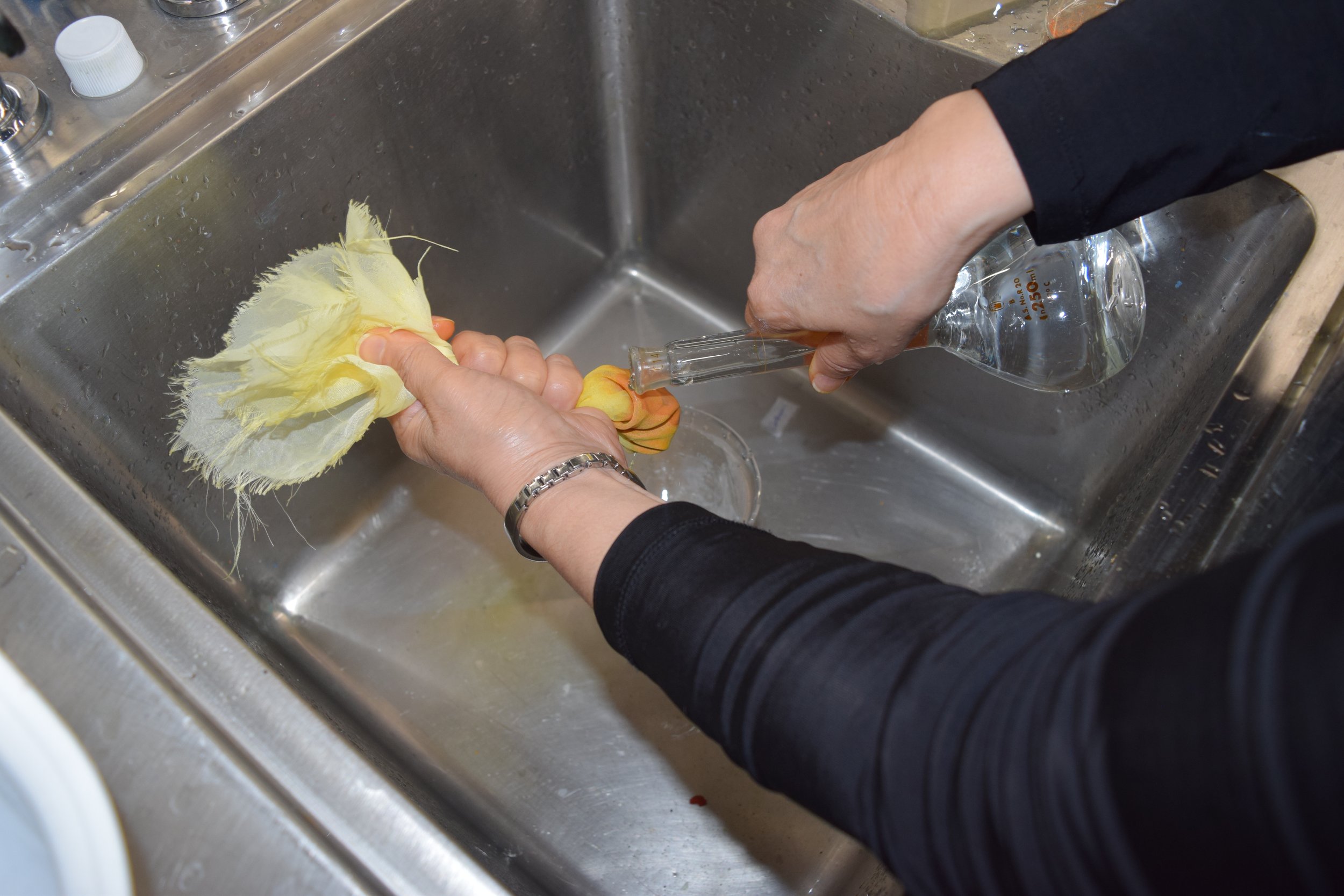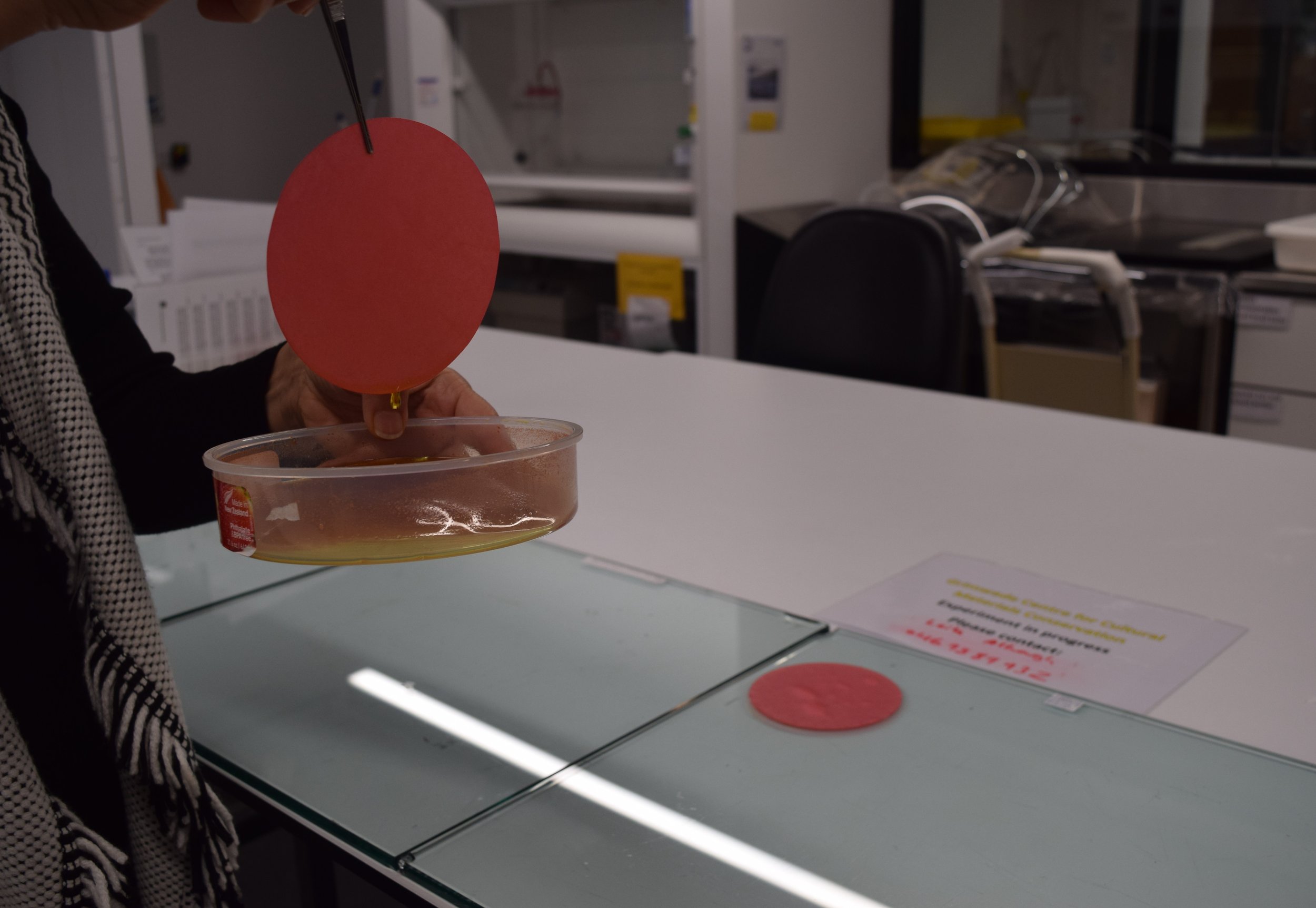SAFFLOWER (GOL-RANG, MOʿAṢFAR) RED DYE RECIPES
First Technique:
Red (sorkh) is made with superior quality of safflower; with the inferior quality, a peach colour (šaftālu) is obtained which is mentioned in Resāleh-ye khošnevīsī ((837 AH/1433 A.D) in 18th century and Resāleh Dar Bayān-e Rang Kardan-e Kāğaḏ in 19th century. The recipe described the first technique for producing red (sorḵ) dye using safflower are described in detail as follows:
مثلا پنج آسار گلِ معصفرِ خوشرنگ و نو که کهنه نباشد بفرماید که در هاون کلان خوب بکوبند، بعد از آن پارچهٔ لوکه را از چهار جانب به ریسمان بر چهارچوب که در زمین ایستاده نصب کرده باشد مضبوط بربندند و گل مذکور را در میان لتّه انداخته به دریا و یا آب چاهی شیرین بشوید تا تمام زردی او بدر رود
و امتحان معصفر از بدر رفتن زردآب است که آب آن را بر پارچهٔ سفید امتحان نماید هر گاه اثری زردی نماند، بلکه مبدل به سرخی شود، داند که شست و شوی گل تمام شده، آن پارچه را با گل وا کرده خوب بیفشارد که تمام آب خشک شود، و اثری از رطوبت نماند. بعد از آن گل را از لتّه برآورده در ظرف انداخته به دست بمالد و از اشخار صلایه کرده بر سرِ یک آسار گل تخمیناً سه آسار بیندازد تا دو بهری مالش دهد که رنگ وا دهد، بعد از آن لتّه مذکور را به نوعی که بسته یود و گلِ مذکور را در لتّه انداخته به ظرفی که لولهٔ باریک داشته باشد اندک اندک آب انداخته باشد و آنچه اوّل مرتبه برآید شهاب اعلی خواهد بود، آخرهایش اوسط و ادنی
صورت رنگ کردن: به نوعی که در رنگ زرد مذکور شده سه ظرف را به همان ترتیب به عمل آورد. اگر خواهیم کاغذ گلگون به در آریم در شهاب اعلی باید خوابانید و از آنجا در آب لیمون و از آنجا در آب صاف، و در سایه خشک نماید
Take five istar fresh and bright safflowers. Grind them thoroughly in a mortar. Place the fine safflower powder in a piece of cloth and close it tightly. Wash it in river or well water until all its yellow bile is extracted. To ensure thorough removal, conduct a test by moistening a white piece of cloth with the safflower bile. If a yellow stain appears, continue the washing process; if a red stain appears, the washing is complete. Squeeze the washed safflower in the muslin cloth until it's dry. Place it in a mortar and rub it with your fingers. For each asar[1] flower, add three asar alkaline ash (three times the amount of safflower), and grind until the color appears. Put it in the muslin cloth again. Use a narrow pipe to pour water slowly over the safflower, extracting three types. First “šahāb-eaʿlāʾ,” second “aowsaṭ,” and third “ʿadnī”. For dyeing paper, prepare three vessels with dye, lemon juice, and water. Dip the paper successively in the dye solution, lemon juice, and water. Dry the dyed paper in the shade.
[1] istar, corresponds to 4 1⁄2 misqals (see footnote 4), or 6 1⁄2 drams. Dram is a weight unit used in apothecaries (the traditional system of weight of the British Isles) and avoirdupois (traditional system of weight in the British Empire and the United States Customary System of weights and measures) systems. An apothecaries’ dram contains 3 scruples (3.888 grams) of 20 grains each and is equal to 1/8 apothecaries’ ounce of 480 grains. The avoirdupois dram contains 27.344 grains (1.772 grams) and is equal to one-sixteenth avoirdupois ounce of 437 1/2 grains. The term also refers to the fluid dram, a measure of capacity equal to one-eighth fluid ounce.
Experiment:
Begin by taking 5g of safflower petals and grind them thoroughly with a pestle and mortar or an electric blender. Transfer the ground petals to a muslin cloth, tightly closing it to form a sac. Wash the sac with cold water until all the yellow colorant is extracted. To verify, moisten a piece of white cloth with the dye releasing from the sac. If a yellow stain appears, continue washing; if it's red, the washing process is complete. Thoroughly squeeze the washed safflower in the sac.
Next, transfer the safflower to a mortar and rub it with your fingers. Add 1–2g of alkaline ash to the mortar (the ratio of ground safflower to alkaline ash is approximately 5:1), grinding them together until the red colorant appears. Transfer the mixture back to the muslin sac, and slowly pour warm water over the sac using a pipette until the safflower dye is extracted. Separate the first superior extract from the second and the last, resulting in three different shades.
Pour the safflower dye, lemon juice, and water into three separate vessels. Dip the paper first in the dye solution, then in 20 ml of lemon juice, and finally rinse it with water. Take it out and let it dry in the shade.








